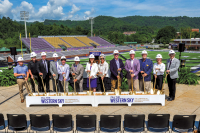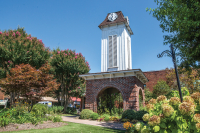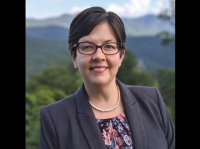Another side of the Cuban revolution
To the Editor:
I very much appreciated your comments about Castro and Cuba, particularly your childhood experience at Guantanamo. I too have had some firsthand experience in Cuba, but have come away with a somewhat different take.
I first went there in 1978 with a delegation of religious journalists, sponsored by the Christian Century magazine, not long after the abortive Bay of Pigs invasion. We visited schools, hospitals, small “family doctor centers” where doctors lived and served their constituencies, neighborhood watch committees, museums, private homes, churches and the ecumenical seminary, and had several long dialogues with church leaders and members. We were left free to arrange these visits on our own with no government direction or surveillance.
Everywhere we went we heard widespread support for Fidel Castro, appreciation for and commitment to the “gains of the Revolution,” resentment against the U.S. embargo and invasion, a sense of alienation from the Cubans who had gone to Miami, and disappointment with the missionaries and pastors who had fled (“the pastors deserting their sheep”).
Then, in the late 80s and early 90s, while our son Philip was serving a six-year stint there as a United Methodist missionary, I went several times. We traveled across the island, had meetings in churches, distributed medical supplies and bicycles, giving lectures in the seminary, and carrying on conversations with a whole range of people. This was during the “special period” after the collapse of the Soviet Union and withdrawal of its subsidies.
At that time there was economic hardship. It was blamed on Russia, government mismanagement, and especially the U.S. embargo. This had engendered experimentation in organic agriculture, a whole range of inventive “make-dos” (dubbed “resolver”), such as preservation of 1950s U.S. autos, and a bus called “the camel” because of its odd shape. The country operated under a dual economy under which those who had access to U.S. dollars were better off than those limited to Cuban pesos and there was an increased desire to migrate to the U.S. Also, there was a remarkable spurt of church growth (the Methodist Church has more than doubled in recent years).
Some takeaways:
• An Afro-Cuban Ph.D. in biochemistry in a new 11-story science lab doing research on developing new medications. Her father was a cane-cutter, and her potential would never have been developed without the “gains of the Revolution” in providing free universal education from nursery to grad school.
• A black Russian Orthodox priest who had shed his cassock and taken up a rifle to defend his country against the Bay of Pigs invasion.
• A Methodist bishop who had early been required to do forced labor but later, with 30 other church leaders, was invited to meet with Fidel and gained from him permission to invite a missionary (our son), recruit U.S. mission teams and acquire building materials to repair the churches.
• An elderly laywoman who had taken a pulpit to replace a departed pastor (“The shepherds deserted the sheep,” she said), and asserted that, as a Christian, she supported the “gains of the Revolution” in free health care, education and social services.
• A dedicated Cuban doctor who treated me for shingles that developed while I was there would accept no payment, and told me she was satisfied with her monthly salary of U.S. $500, because her life purpose was to “serve the people,” not to make a lot of money.
• An island-wide network of “family doctor centers,” each serving 250 families, where doctors lived, held clinic in the mornings, and made house calls in the afternoon.
• An 8-year-old boy who invited us to see the “museum” in his village, which turned out to be a one-room, dirt-floor, thatched roof hovel where his family had lived before the Revolution, then invited us to their modern three-room apartment with electric lights, refrigerator and TV.
• A museum depicting — among aspects of the armed struggle led by Fidel and Che to oust the dictator Batista — a display of the 60-some attempts by the CIA to assassinate Fidel.
• A seaside nature reserve designed to protect from tourists the giant turtles who come up to lay their eggs — one result of a constitutional amendment requiring environmental protections.
• A layman in our son’s church who had just been released from an eight-month prison term assessed for criticizing the government, where he said he was treated well and saw no signs of torture.
• Church people — some supportive, some critical of Fidel and the government — who shared worship and fellowship together in the same congregations.
Of course, there were the abuses alluded to in your editorial — killings, corruption, confiscation, persecution — such as have been reported by refugees and the U.S. media. But I saw another side to the story, which readers need to know as well.
Doug Wingeier
Waynesville





